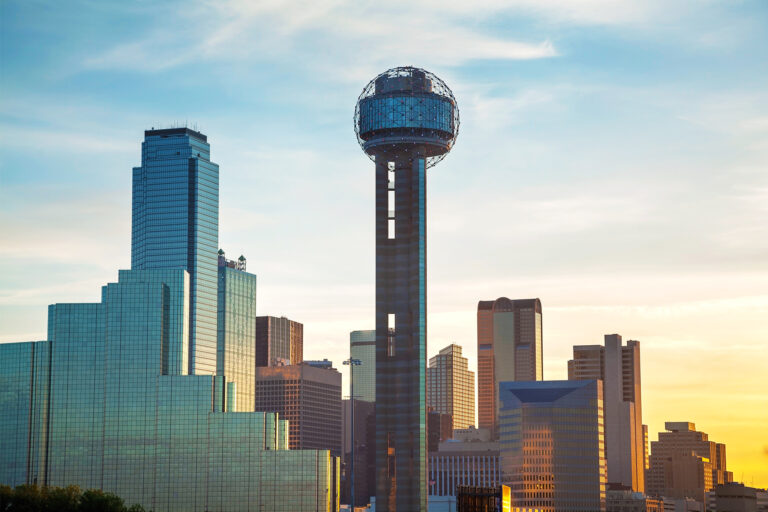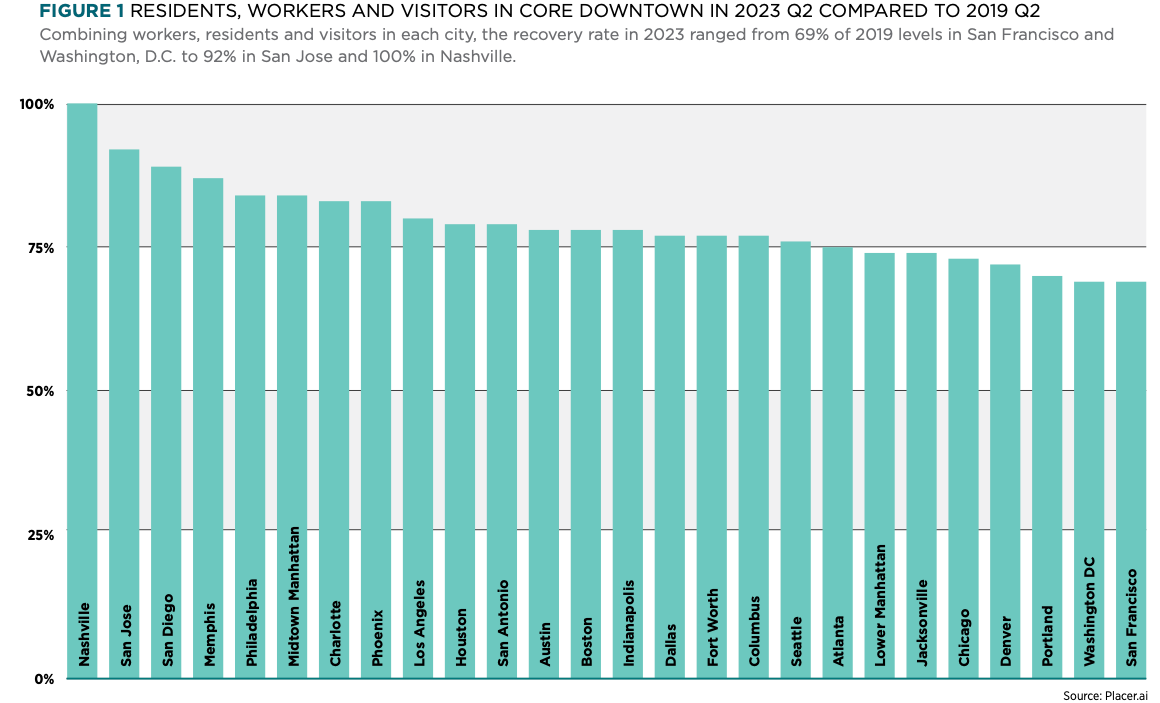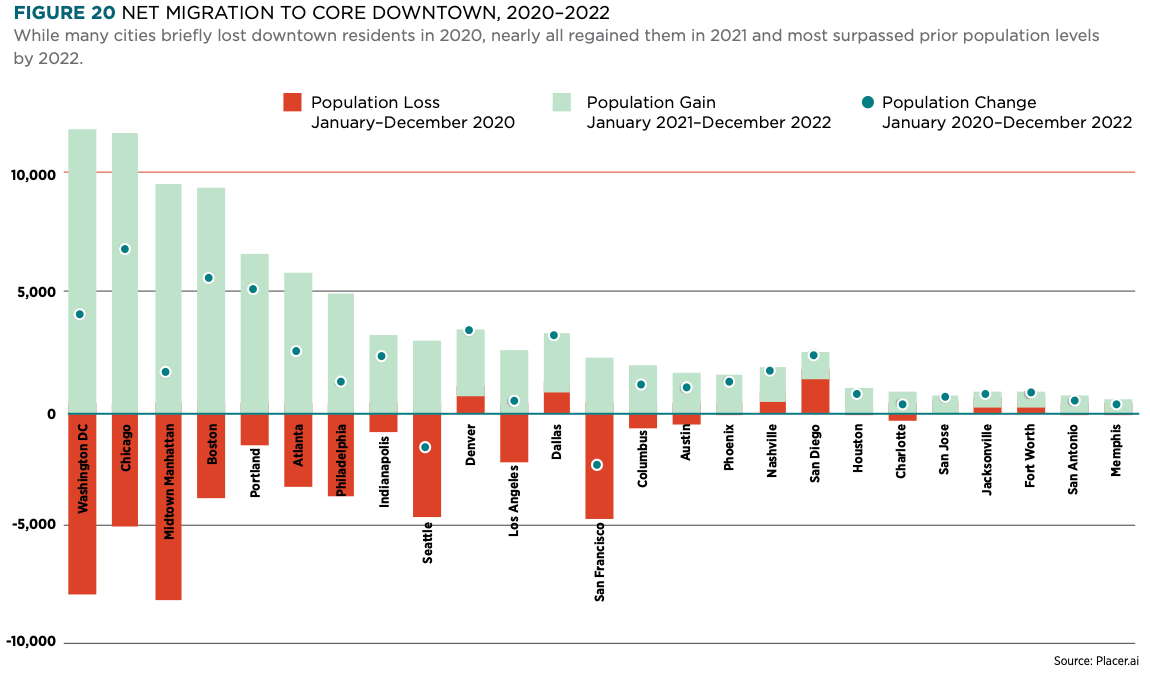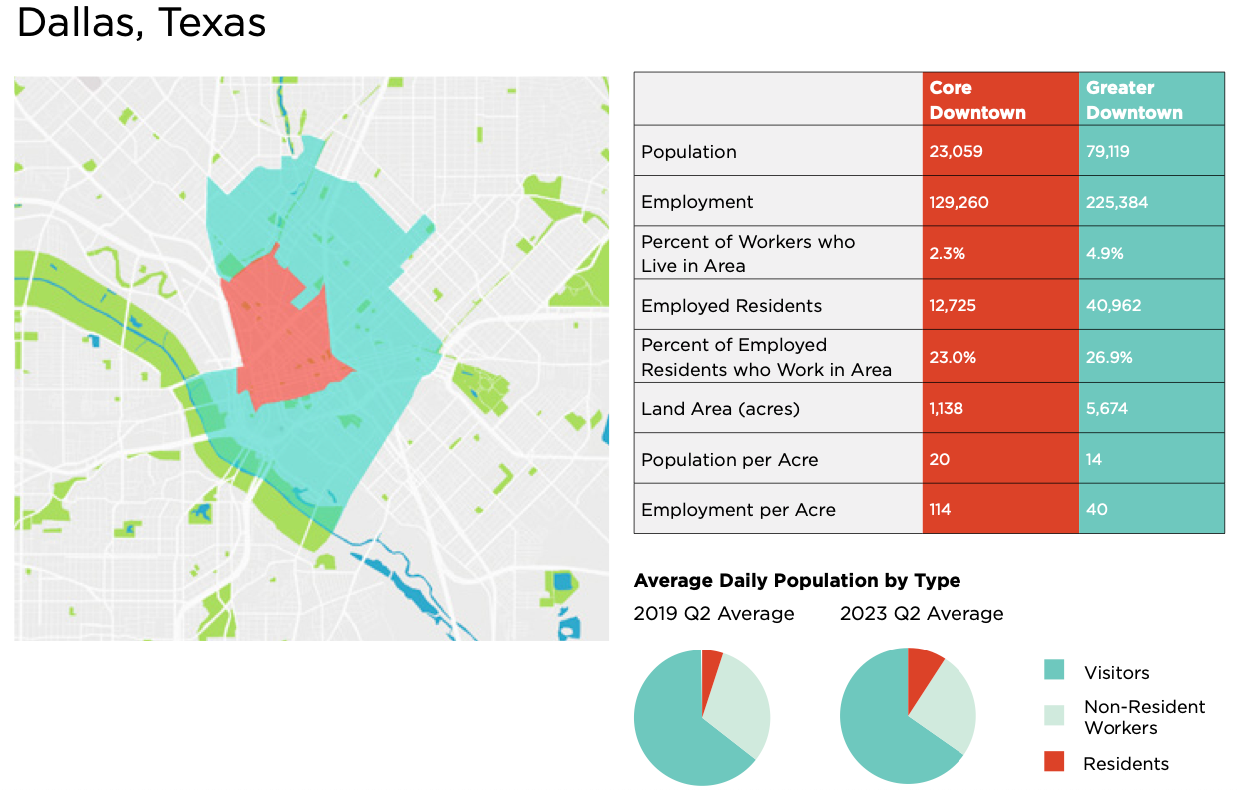A new study of 26 of the nation's largest downtowns finds that downtown Dallas is barely bouncing back from the pandemic.
Last week, Bloomberg's Richard Florida published an interesting article about what's driving downtown's growth since the pandemic. He reviewed new research by Paul Levy and researchers in Philadelphia's Center City neighborhood. Levy's research uses cell phone tracking data to identify his three groups of people: people who work downtown but don't live there, people who live downtown, and visitors who come for entertainment. A graph of downtown activity patterns.
Across the three groups, Dallas-Fort Worth and Austin saw activity increase by more than 75% in the second quarter of this year compared to the same quarter in 2019. San Antonio and Houston are slightly ahead of those three cities. .
Levy's team found that office activity has returned to about 65% of pre-COVID-19 levels in nearly every location, including Dallas, Austin and Houston. Some cities are above 75%, including Fort Worth (72%) and San Antonio (85%).
In Dallas-Fort Worth and Houston, fewer than 30 percent of downtown workers live downtown, according to census data. San Antonio has the lowest at about 18 percent, and Austin has the highest at just over 35 percent.
In Houston and Austin, Texas accounted for the largest share of post-pandemic visitor growth at 82%, while Dallas-Fort Worth and San Antonio accounted for just over 75%.
But the biggest increase, they found, was in the number of people moving downtown after the pandemic. That includes Dallas, where the number of downtown residents has increased by 118% compared to 2019. This is one of the highest growth rates of any Texas city on the list. (Dallas was surpassed only by Houston, with a growth rate of 121%.) Austin posted her 106% growth, while Fort Worth and San Antonio were at about 100%.
Of all the Texas cities on the list, Dallas had the least loss of downtown residents during the pandemic, followed by Austin, Houston, Fort Worth, and San Antonio, which ultimately recovered the most. .
The Center City District report explains that all of this means downtowns across the country are at a tipping point.
“Fundamentally, this report, like the organizations that produced it, is place-focused and action-oriented, asking how we can accelerate the recovery of our city centres. ” Levy asks in the preface. “But if history has taught us anything, it is that cities are places that must constantly reinvent themselves, that they must choose new directions, and that they must make decisions to shape new futures. It’s a place that needs strong leaders.”
That requires considering everything from downtown quality of life, crime, services, public transportation and even the mix of businesses locating downtown, the report said.
“More fundamentally, can (and should) we restore the status quo of 2019, or will downtowns need to reinvent themselves, learning how to thrive under fundamentally changed circumstances? ” Levi asked.
This is an issue the city should consider as it identifies opportunities to shape the future of downtown. With the subway system already disrupted, city council members have begun exploring the possibility of a streetcar system that connects existing lines in Oak Cliff and Uptown through downtown. City officials are talking about land uses other than adding parking. And there are discussions about how to manage things that draw people downtown, like the arts district and parks.
But big questions remain. Is downtown Dallas a place to call home, a place to play, work, or all of the above? The answer may lie in the data.
author

Bethany Erickson
View profile
Bethany Erickson is D Magazine. Throughout her career, she has written about real estate, education policy, the stock market, and crime, sometimes all at the same time. She hates lima beans and 5 a.m., and she takes her SAT practice tests for fun.




